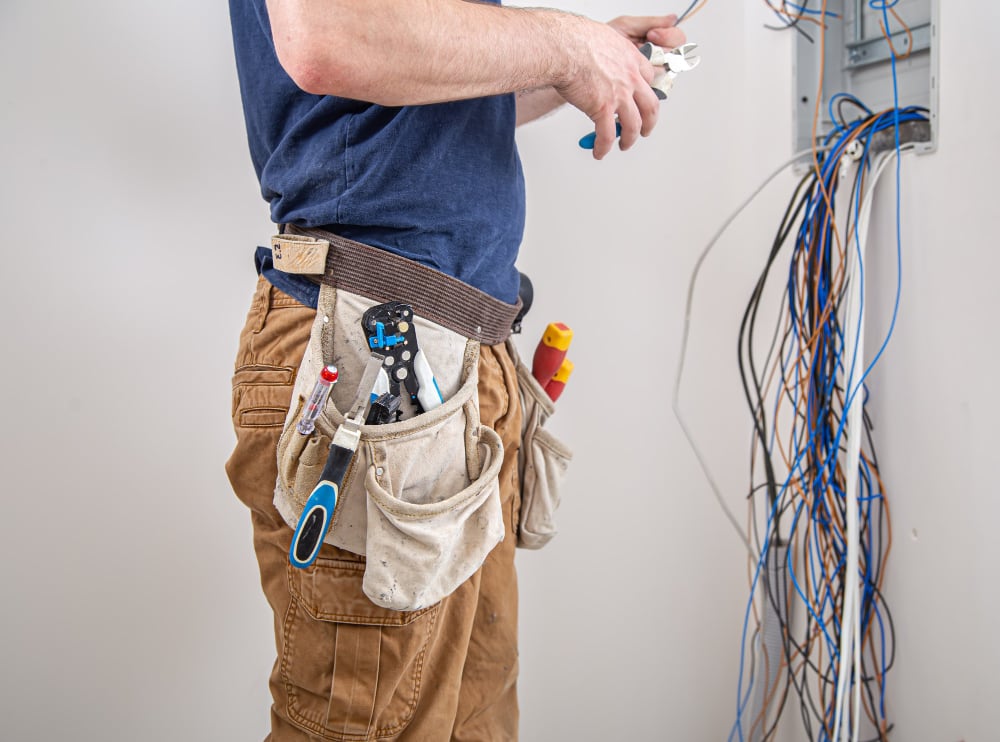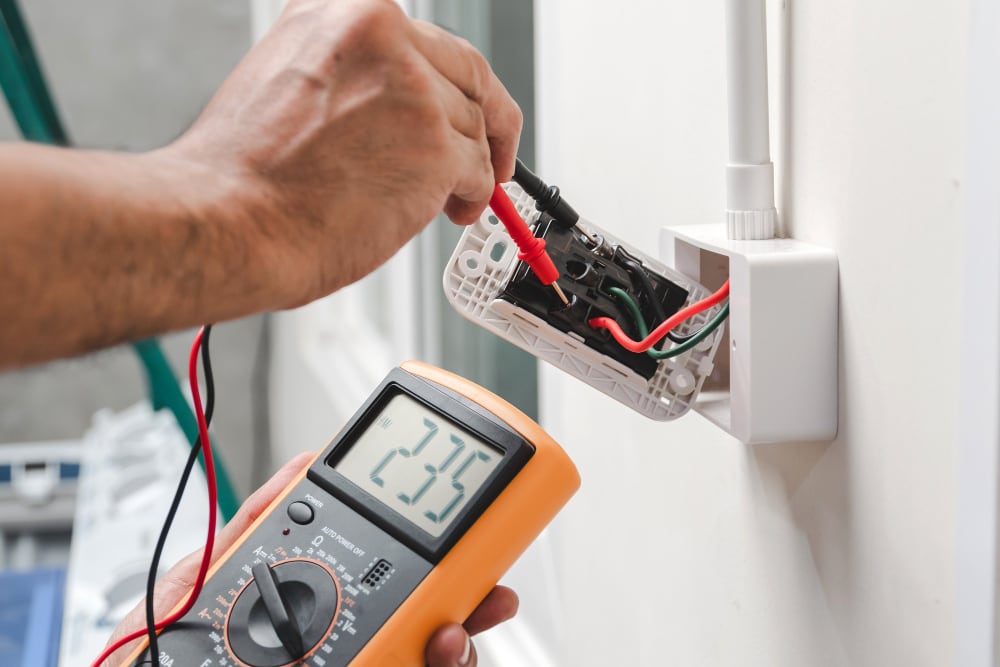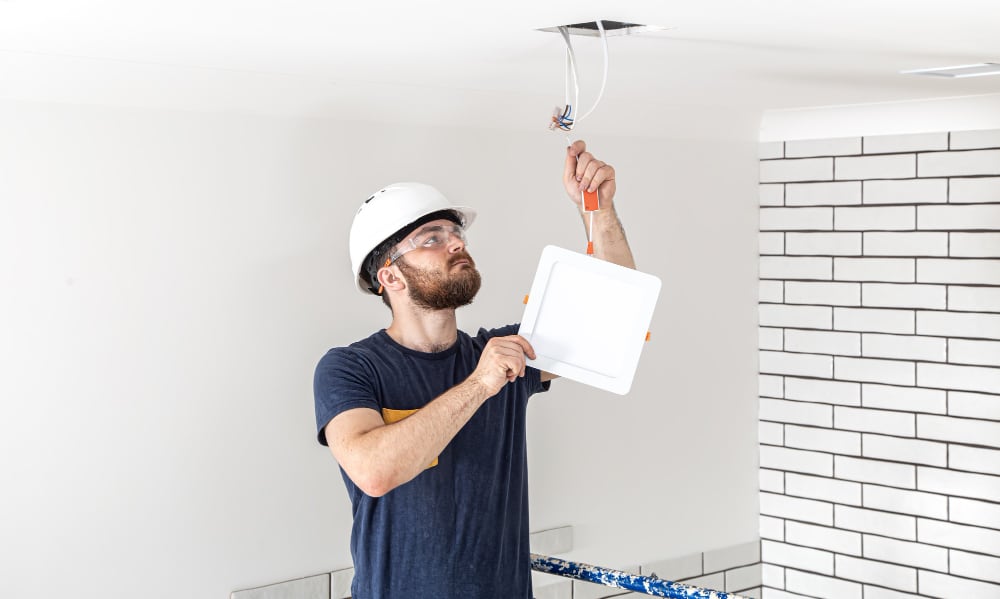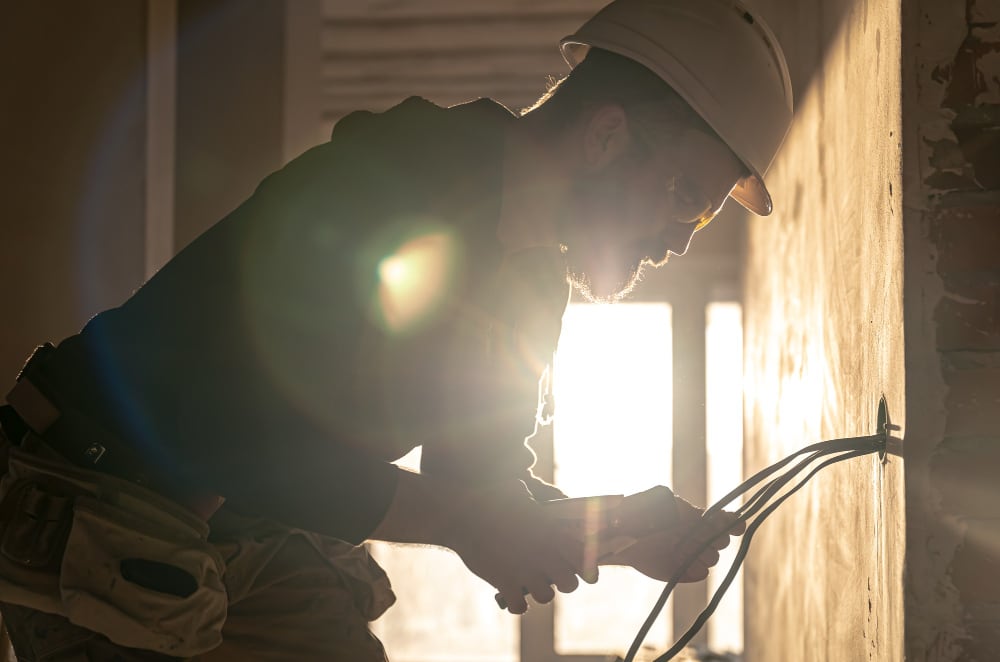Knowing how electrical wire color codes work is important if you're considering doing any kind of electrical work in your home. This handy guide will examine the basics of wire color codes so that you can approach home wiring in a safe way.
If you've ever opened up a light switch or electric outlet (after turning off the power, of course), you may have been confused about the variety of colors you see. Black wires, white wires, bare copper wires, and more - they all have a specific purpose and tell you something about how your home is wired.
This guide will examine the different categories of wire and examine the wire color code for each. Along the way, we'll also examine electrical safety, wire anatomy, and more.
You should never work on electrical wires unless you're confident in your abilities. The danger of electrical shocks is very real unless you know what you're doing. Here are some important safety tips:
So, how do we know what color-coding system to use for electrical wiring colors? The answer lies in the National Electrical Code (NEC). The electrical wiring color codes of this code are used in all 50 states and set a uniform series of standards for safe installation, design, and inspection of electrical systems.
As noted, the NEC covers much more than just wiring colors. If you're ever in doubt about important details like how far apart electrical outlets should be, or what type to use in different rooms, or any number of important considerations in residential or commercial electrical wiring, the NEC is the place to look for the answer.
If you were to go to your local home improvement store and buy a spool of electrical cable, you might be a bit confused about this discussion of wire colors. All you'll see is some rather bland colored cable. Where are the multi-colored wires that we've alluded to?
The answer is, is that the wires are inside the cable. Under the outer plastic sheathing of the cable, you'll find a variety of different colored wires. The number and color-coding of the wires inside depend on the use the wire is intended for.

A "hot" wire. Sound dangerous? You can bet that it is. Hot wires lead directly from your home's main electrical panel or secondary electrical panel to the destination - in most cases light switches or light fixtures, or an electrical outlet.
For obvious reasons, it's important that the correct wire color is used for hot wires, to lessen the possibility of electrical shock. Here are the specified colors that should be used for hot wires.
Black wire is the most common choice for hot wires. Black wires should never be used for any purpose except to carry power from your electrical panel.
Red wire, or sometimes orange wire, is used for some hot wire applications. Most commonly, you'll find red wires used in 240-volt wiring, where a second hot wire is required. That prevents confusion with the other hot-colored wires.
A second specific application is used when installing multiple interconnected smoke detectors. Here the red wires carry power between all of the detectors so that all will go off when one is triggered.
Working with commercial/240v installations is very dangerous and should only be done by a licensed electrician.
All though it's not recommended, in some cases, you'll find white wires marked with a band of black or red electrical tape to indicate that the white wire is being used as a hot wire. If a white wire is used as a hot wire, the colored tape should be wound around the wire several times to avoid any confusion as to the wire's purpose. Generally, it's better to simply use red and black wires for hot wiring applications.

A ground wire is an essential part of any electrical circuit. The wire creates a safe path for the current in the event of a fault.
You'll find ground wires attached to metal appliance frames and metal switch and outlet boxes, among other locations.
Bare copper wires are the most common wire used for grounds. If you see bare copper wires, you'll know beyond a doubt that these are ground wires.
While less common, green wires are sometimes used for ground wire in the place of bare copper wire. Incidentally, electrical outlets and light switches will often have green screws to identify the ground connection.
Don't be deceived by the name "neutral" when discussing wire color codes. Neutral wires carry power in many applications, just the same as red wires or black wires. The difference lies in the pathways the different wires use. Red or black hot wires bring power from the breaker box to the switch or outlet they borrow. Neutral wires run between different locations and back to the breaker box.
Look for white and gray wires when examining wiring and you'll have identified the neutral wires in the circuit. As we've noted above, sometimes white wires will be marked with a piece of red or black tape to indicate that they're hot, so take a careful look before assuming that a wire is a neutral wire.
We've discussed the most common wiring colors, but there are some other colors that you'll occasionally find when examing electrical wire and wiring systems. These are blue and yellow wires
Blue wires are sometimes used as a hot wire in flexible electrical cables.
Yellow electrical wires are also found in some flexible electrical cables. Both blue and yellow wires are sometimes used when wiring three-way and four-way switches.

If you've sorted out your wiring and are ready to make a repair or wire in something new, it's important that you do the job properly. Here are some helpful tips on making safe connections.
You don't need too many tools to do the job right, and the right tools will make the job a lot easier. Be sure you have the following tools:
When joining wires together:
When making a screw connection:

Understanding how electrical wire colors are assigned is an important first step in working on your electrical system. But electrical safety requires more than some rudimentary knowledge.
Doing your own wiring or wiring repairs isn't without risk. Poorly executed repairs or installations can present safety issues through electrical shock or electric sparks that might cause a fire.
If you're unsure about wiring repairs or electrical work, contact us and we'll be happy to talk about the options that are available to you.
If you're in the Dallas Fort Worth area Contact us for all your plumbing, HVAC, roofing, and electrical needs. Remember, estimates are always free!
